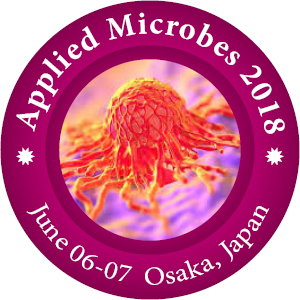
Richard Cangelosi
Gonzaga University, USA
Title: A quasi-steady-state approximation to the basic target-cell-limited viral dynamics model with a non-cytopathic effect
Biography
Biography: Richard Cangelosi
Abstract
Mathematical models have proven valuable in understanding the dynamics of viral infections in vivo within host cells and were originally devised to examine HIV infection. For interactions of that sort, a basic three-component dynamical systems model consisting of an uninfected target-cell population, an infected cell population, and the free virus population was proposed (see Figure 1).
We shall consider non-cytopathic retroviral interactions; that is, interactions that satisfy the ratio of the death rate of the infected to the uninfected cells equal one, which is believed to be the case for the equine infectious anemia virus (EIAV). EIAV shows many characteristics similar to other retroviruses, including a very rapid replication rate and high levels of antigenic variation. It, however, is unusual among retroviruses in that most infected animals, after a few episodes of fever and high viral load, progress to a stage with low viral load and an absence of clinical disease symptoms. The horses effectively control viral replication through adaptive immune mechanisms.
Analysis of previously published target-cell limited viral dynamic models for pathogens such as HIV, hepatitis, and influenza generally rely on standard techniques from dynamical systems theory or numerical simulation. We use a quasi-steady-state approximation to derive an analytic solution for the model with a non-cytopathic effect, that is, when the death rates of uninfected and infected cells are equal. The analytic solution provides time evolution values for all three compartments of uninfected cells, infected cells, and virus. Results are compared with numerical simulation using clinical data for equine infectious anemia virus (EIAV), a retrovirus closely related to HIV (see Figure 2), and the utility of the analytic solution is discussed.
Figure 2(a) provides a comparison of the one-term asymptotic representation of the population (solid black curve) with a numerical simulation (dashed curve) of the governing equations using parameter values relevant to the clinical data. Figure 2(b) provides a comparison of the one-term asymptotic representation of the free virus population (solid black curve) with its numerical simulation (dashed curve). The initial virus population was taken to be 450 (viral RNA copies / ml) .We note the excellent agreement between the analytic asymptotic representation and numerical simulations.
Although such nonlinear problems can be solved numerically the computation must be performed sequentially for each different set of parameter values. The advantage of this asymptotic approach is that it yields an analytic representation, involving the parameters as well as time, required for least-squares parameter-identification curve-fitting procedures to experimental data. We conclude by discussing the application of this approach to an experimental data set on EIAV infection.

